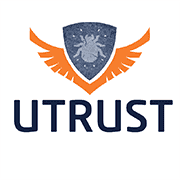Software engineering frameworks SEI, CMMI, ISO, IEEE & ANSI implementation benefits:
CMM stands for Capability Maturity Model, which is a framework developed by the SEI to improve software development processes. The CMM is a five-level model that defines how well an organization’s processes are defined, managed, and optimized. The higher the level of maturity, the more optimized and efficient the organization’s software development processes are.
ISO stands for International Organization for Standardization, which is an independent, non-governmental international organization that develops and publishes standards for various industries, including software engineering. The ISO has developed various standards for software engineering, including ISO/IEC 12207, which defines the software development life cycle processes, and ISO/IEC 15504, which provides a framework for assessing software process capability.
IEEE stands for Institute of Electrical and Electronics Engineers, which is an international professional association that develops and publishes standards for various industries, including software engineering. The IEEE has developed various standards for software engineering, including IEEE 12207, which defines the software development life cycle processes, and IEEE 830, which provides guidelines for writing software requirements specifications.
ANSI stands for American National Standards Institute, which is a private, non-profit organization that coordinates the development of voluntary consensus standards for various industries, including software engineering. ANSI has developed various standards for software engineering, including ANSI/IEEE 829, which provides guidelines for software test documentation.
These frameworks and standards can help organizations improve their software development processes by providing a structured approach and guidelines for best practices. However, it’s important to note that simply adopting these frameworks and standards does not guarantee success. Organizations must also ensure that they have the necessary resources, skills, and commitment to implement and maintain these practices effectively.
The benefits of implementing a software engineering framework
Implementing a software engineering framework can provide several benefits for organizations. Here are some of the main benefits:
- Improved quality: Software engineering frameworks provide a structured approach to software development, which can help identify and address quality issues early in the development process. This can lead to higher-quality software that is more reliable and less likely to contain defects.
- Increased productivity: By providing guidelines, best practices, and templates, software engineering frameworks can help streamline the software development process and reduce the time and effort required to develop software. This can result in increased productivity and faster time-to-market.
- Better risk management: Software engineering frameworks can help identify and manage risks associated with software development. By following a structured approach, organizations can proactively identify potential risks and take steps to mitigate them before they become major issues.
- Improved communication and collaboration: Software engineering frameworks provide a common language and set of practices that can help improve communication and collaboration among team members. This can lead to better teamwork, more efficient processes, and fewer misunderstandings.
- Better alignment with business goals: Software engineering frameworks can help ensure that software development efforts are aligned with the organization’s business goals and objectives. By following a structured approach, organizations can better prioritize development efforts and ensure that they are focused on delivering value to the business.
Overall, implementing a software engineering framework can help organizations improve their software development processes, increase productivity, reduce costs, and deliver higher-quality software that better meets the needs of their customers.
Comments are closed.





